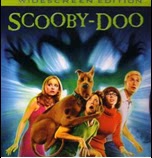



This season the most fitting party wardrobes pay homage to the 1920s.
Recently, when glued to the gruesome news, I have veered between terrible anxiety that we are all tipping into a financial abyss and the hope that everything will turn out to be fine; or rather, that we have survived similarly uncertain times before, dancing on the edge of a precipice.
As for the reported expansion of the European Financial Stability Facility bailout fund, I confess I tend to forget the acronym, but not the numbers: one trillion euros. I cannot conceive of what this figure means, but instead find myself thinking of a snapshot from December 1926, of two young flappers demonstrating the charleston on a Chicago rooftop, teetering above a great drop. They were dancing three years before the Wall Street Crash, when bankrupts jumped off parapets, but just a month after American Vogue had hailed Chanel's little black dress as the future: knee length, sleek, and modern as the new automobiles ('Here is a Ford signed Chanel').
Gucci meets The Great Gatsby
Nine decades after 'flapper' entered the English language - to denote a girl 'somewhat daring in conduct, speech, and dress', according to an early dictionary reference - it is difficult to understand the consternation caused by their appearance. In 1922 the US Secretary of Labour denounced the 'flippancy of the cigarette-smoking, cocktail-drinking flapper'; this season, the term has had some currency again, but only in relation to the resurgence of 1920s-inspired beaded party frocks. Gucci's black and gold jazz-age dresses, central to the brand's spring/summer 2012 catwalk collection, are already in evidence in Hollywood (Evan Rachel Wood channelling Clara Bow - the original it-girl - with cropped hair and crimson lipstick on the red carpet this month). The high street has also paid homage to The Great Gatsby , most notably with Wallis's 1923 collection, based on designs from the label's pattern archives; clever Wallis, with prices under £100, yet gleaming with the subtle patina of sartorial history.
Most authentic of all, however, is the forthcoming Kerry Taylor auction, which will take place on Tuesday (the viewing starts tomorrow at the Royal Opera Arcade in Pall Mall). The items on sale include Elizabeth Taylor's gold couture pieces, Audrey Hepburn's ivory lace gown, the Duchess of Windsor's patent-leather handbag, and an early Gabrielle Chanel flapper dress, in beige crêpe-de-chine, dating from 1920. The estimate for the latter is upwards of £6,000 pounds, giving weight to the overused phrase 'investment dressinge_SSRq, not that the lucky buyer is likely to wear such a valuable museum piece. Eurobonds or couture originals? If I had any money to invest, I know which I'd prefer…










